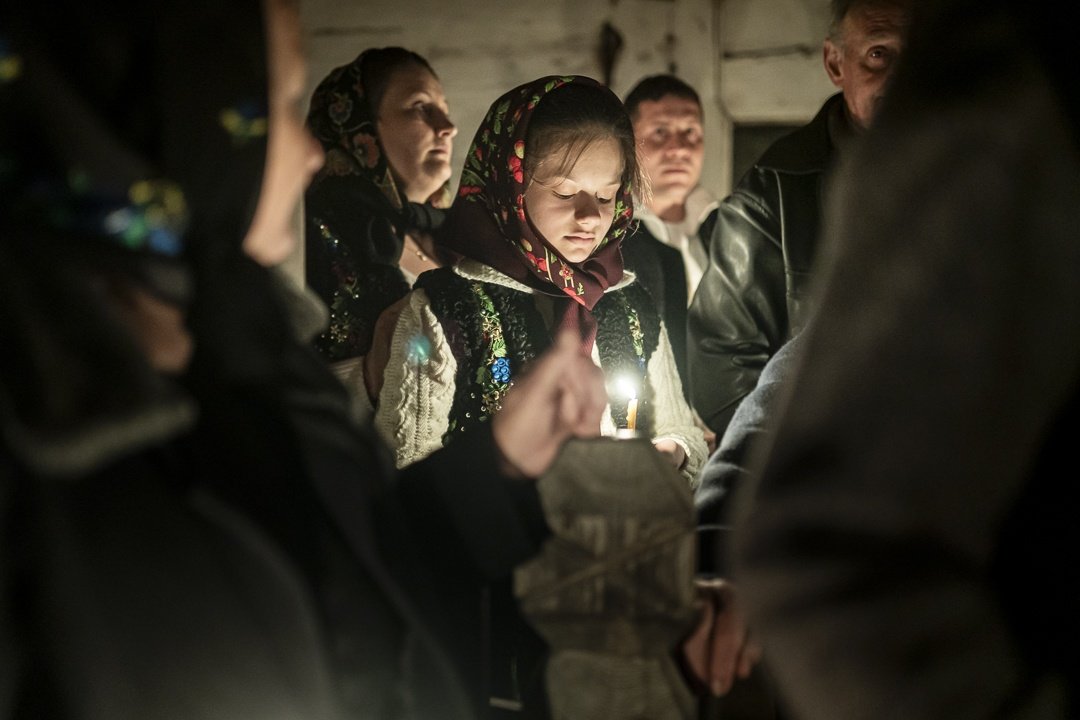Words & Photos: Mihnea Turcu
May 2024
I was just over 5 years old when my grandmother took me to church for the first time one night. We dressed well and walked through the streets filled with mud and white flowers from the blossoming trees. It was dark outside, and the bells, initially faint in the distance, then louder and louder, alerted us that we were approaching. The churchyard was already full of people from the whole village, and the fact that they spoke almost in a whisper made you believe that something magical was about to happen. As if someone had signaled us, just before midnight, we all started to enter the church, and immediately after the tall wooden door, my grandmother bought me a candle and told me to keep it, not to light it yet. It was Easter Eve, the pinnacle moment of the entire Orthodox Holy Week of Easter.
The above story took place around 1984, at the beginning of my childhood in the Romanian village universe, where faith and the church deeply existed in the heart of the community. I later moved to the city, and in adolescence, the absence of grandparents and the context made me forget and distance myself from that traditional world. 30 years later, with a camera in hand, I rediscovered the people, customs, and traditions of the Romanian village.
Romania is different if you traverse it from east to west and north to south. Nature, architecture, and people’s physiognomies differ slightly from one area to another. There are initial visual contrasts, apparent and easier or harder to perceive for the eye of a traveler, but they also have deep, profound implications that vary in the structure and manifestation of beliefs and customs.
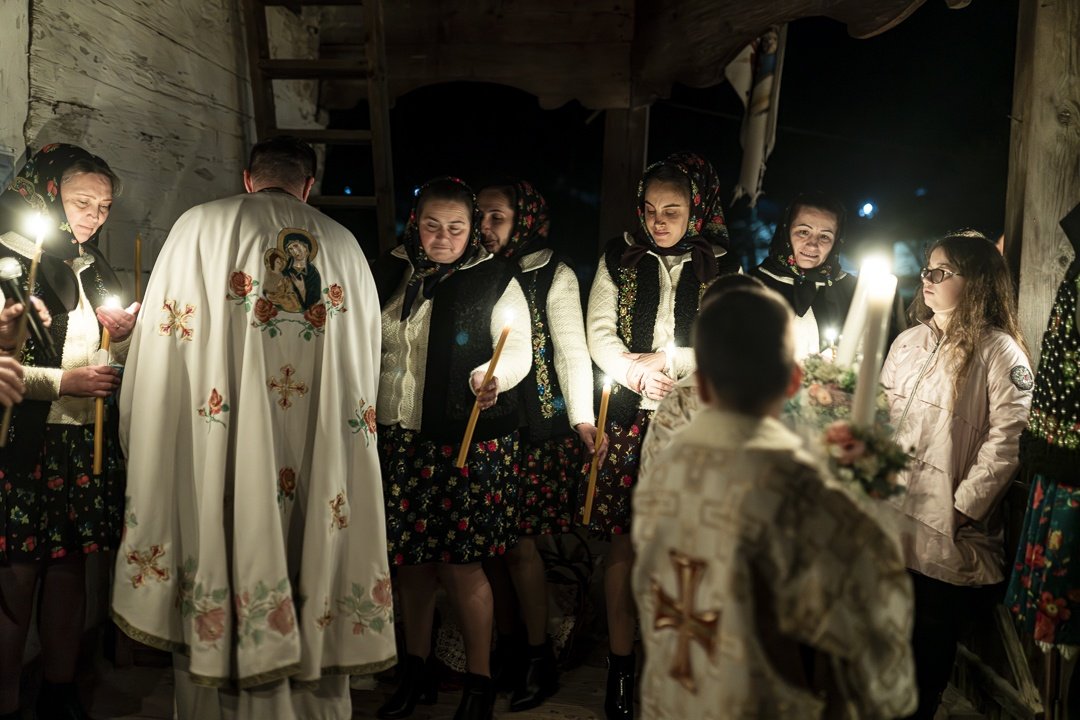
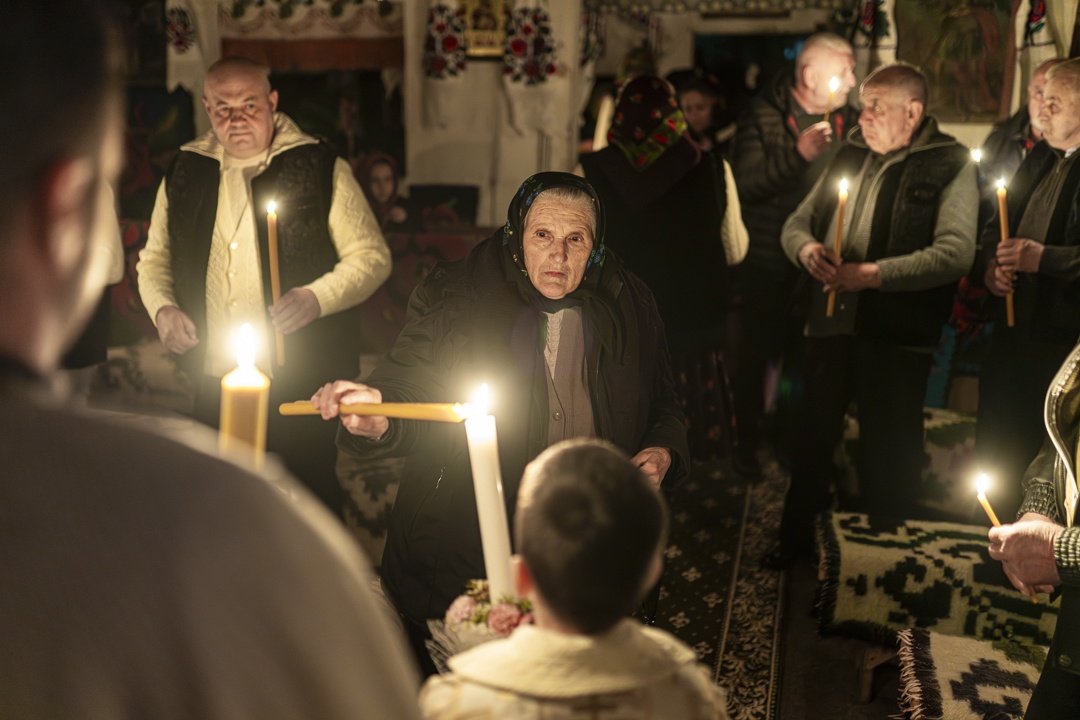
Perceived from within, in its intimacy, rural life has a particular meaning and mystery, tightly linked to faith, nature, time, and the rotation of seasons. There is no better time to get to know the Romanian village than when it prepares for celebration, and of all, the most intense and profound is Easter.
It could be seen only as a manifestation of religious customs and dogmas. Still, placed in time, in the sequence of centuries, the Easter celebration acquires a much more intense significance, becoming, best said, a necessity. Set at the beginning of spring, the Holy Week bears the symbol of the rebirth of inner life, of the purification of the soul, and of a fresh start, things that for the Romanian țăran (peasant), in his solitude with nature, must be understood as absolutely crucial. With winter now behind us, the feeling of a new life appears in every insect and every flower.
Fasting begins 40 days before Easter day, and as I perceive it, it has the physical connotation of spiritual introspection. There can be no new beginning without first realizing what was good or bad, passing through the body, followed by a confession and a spiritual cleansing.
During Holy Week, churches with the smell of old wood reopen, and from Monday to Friday, people come to Mass services every morning and evening. The rooms are aired and refreshed, the animal stables, the streets, and the cemeteries are cleaned, and festive white clothes are washed and left to dry in the warmth of the sun’s rays. People and things move at an increasingly perceptible rhythm. In the air, you can feel everything happening and converging towards a particular moment, perhaps the most intense, the Night of the Resurrection.

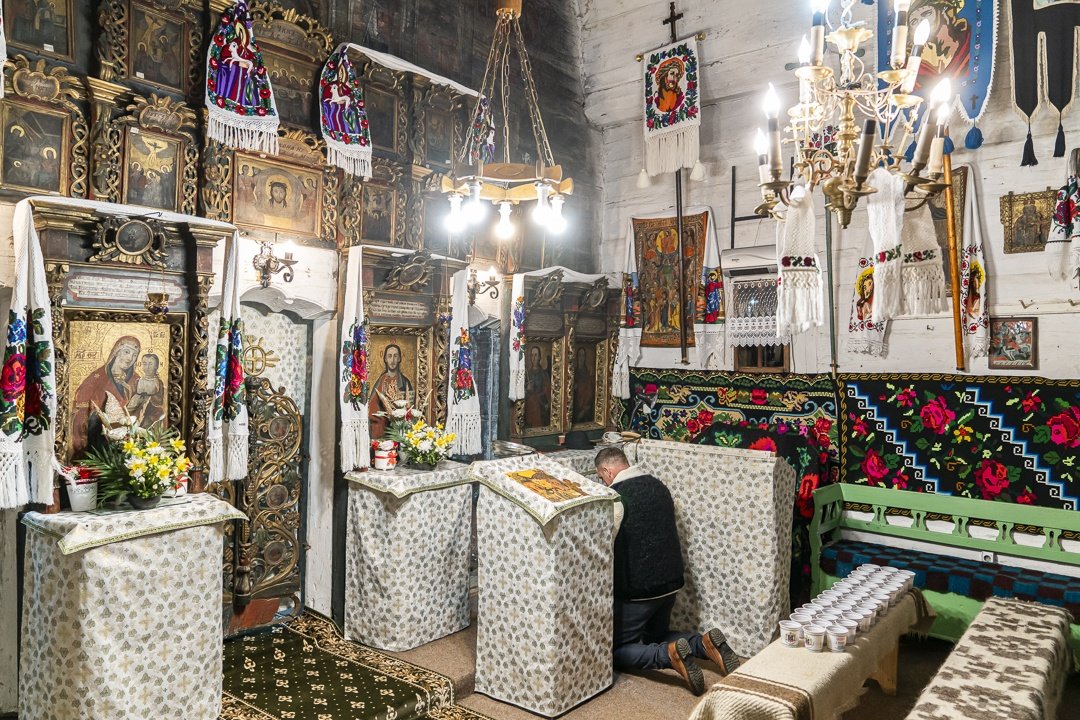
The Easter celebration continues on the first, second, and third days, with consecration services in the churchyards, dances, shows, and a joyous end to the long fast. For the hurried passerby, the atmosphere among people is one of open smiles, cleanliness, and joy. However, when looking at Easter more closely, after the Night of the Resurrection, there is a renewed feeling of belonging to history, places, and time.
A year ago, in the spring of 2023, there was total darkness on the streets of the village in Maramureș where I chose to spend Easter Eve. I had decided some time ago that every Easter holiday would find me, in turn, at one of the old churches in the Maramureș villages. There are too many and too distinctive not to see them come to life that night. An hour before midnight, the village felt empty, and the over 500-year old church tower, projected like a ghost against the starry sky. Just as I was beginning to doubt that there would be any service, I saw the steam of a breath approaching from a distance. It was the priest, and because I had arrived early, he asked me to help him pour wine over the bread into glasses. Without knowing each other, I felt that I belonged to that place; I had already become one of them.
In the meantime, in the long sounds of the bells heard at night throughout the village, the church was filled with people dressed in traditional costumes from inside to the gate. They still spoke in whispers, but it seemed like whispers of a long-awaited anticipation, betrayed by their lively eyes. At midnight, the lights went out, and the silence of the people became one with the church’s wood. From the altar, the thick and clear voice of the priest was heard uttering the injunction that has endured for centuries, “come and take light…”
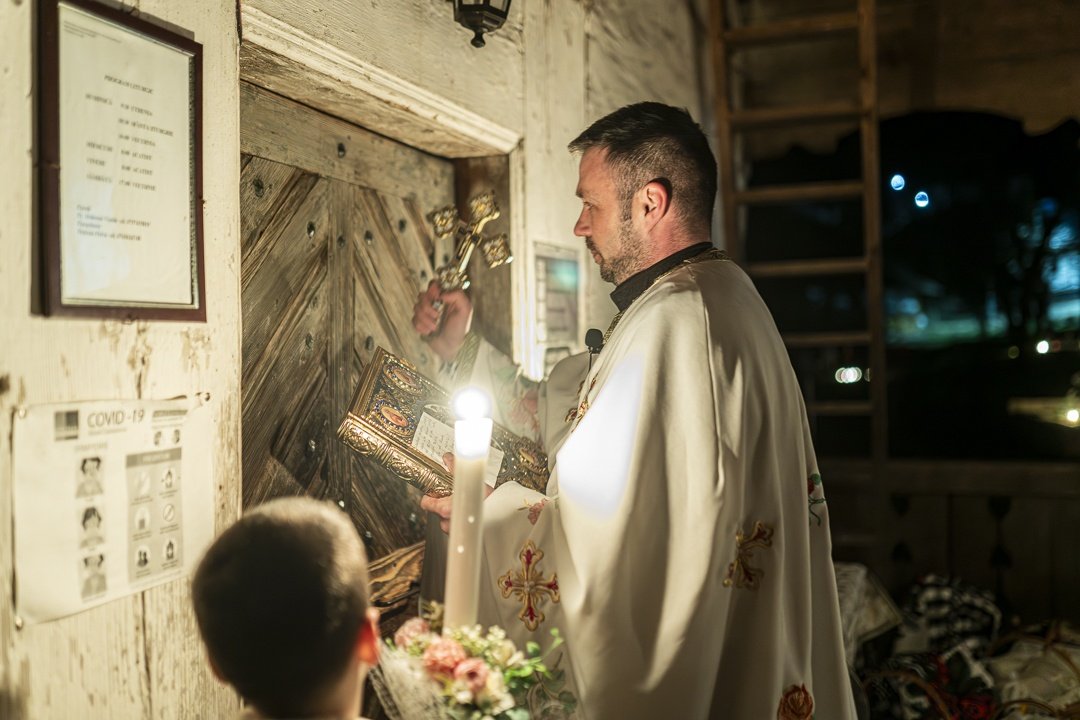
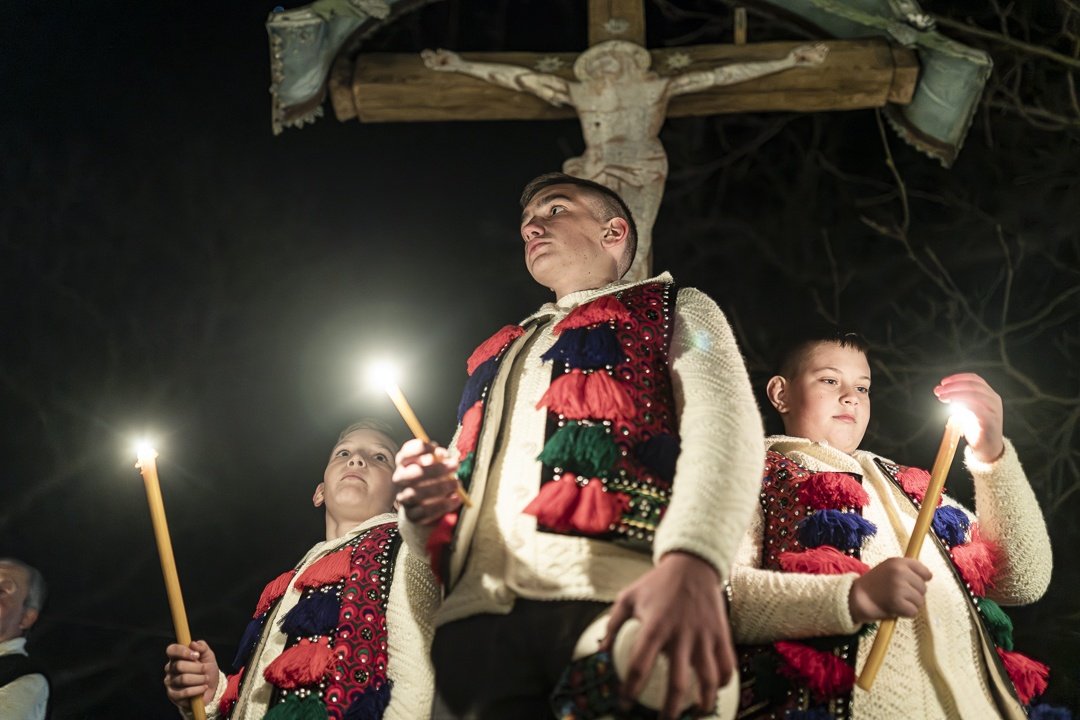
From candle to candle, the light of Easter began its journey from the altar through the church to the courtyard, later reaching every home. Faces and hands were outlined in the darkness by the yellow light of the candle, its glow symbolizing that we know where we come from and where we are heading. With candles in hand, we entered the courtyard, closing the church’s gates behind us. The procession thus encircled the church three times to stop again at its gate where the priest, symbolizing the archangel, knocks to open “the gates of paradise,” in a dialogue with a muffled voice representing the Devil. The entire scene illustrates the entry of Jesus Christ and his victory into the world of hell. The church doors then opened wide, and the Resurrection service continued inside.
This is the peak moment of the entire Easter celebration, and its magic lies beyond dogmas, books, or religion in the needs of the soul and in customs traced by centuries. Time seems to stop in place, and through its gate, I hear my grandmother’s voice who, one night long ago, put a candle in my hand, whispering to me, “Do not light it yet.”
